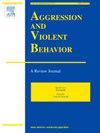Advancing the science of biosocial transactions related to aggression in children and young people: A brief review and steps forward
Abstract
Aggression towards others produces great physical, emotional, and economic burden. An extensive body of research identifies risk factors related to aggression that span biological and environmental factors. However, much of that work identifies risk factors in isolation (or among only a few other risk factors) even though the development of aggression is a complex phenomenon involving interactions among risk and protective factors across time and across levels of analysis. The goal of this piece is to identify themes in the literature to articulate five practical steps needed to advance the science of biosocial transactions related to the development and maintenance of aggression in children and young people. Specifically, we highlight key biological (brain, genes) and psychosocial (parenting, peers) domains in aggression research as we comment on ways to improve the measurement of and quantitative methods in the study of neurocognitive process and environments related to aggression. We also discuss the science of intervention within a transactional model, highlighting the need for the science of behavior change to develop from a mechanistic framework. Our understanding of aggression is poised for transformation. We are in a position to integrate biosocial insights in ways that allow us to specify mechanisms and better understand transactional relationships that inform how and why some children grow up to display aggression.

 求助内容:
求助内容: 应助结果提醒方式:
应助结果提醒方式:


